Zwarte Piet Must Die: Black Pete And His White Angel Are Coming To Get You This Christmas
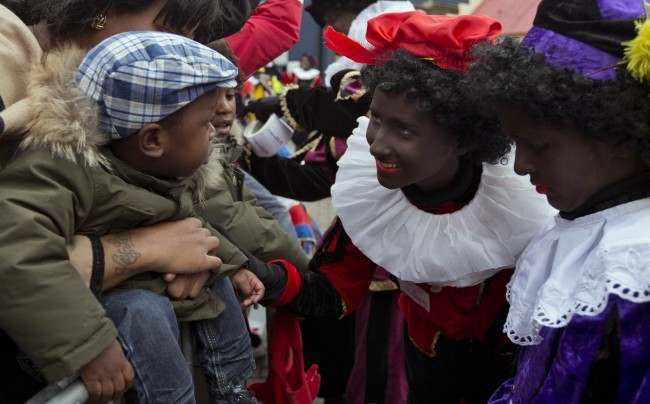
HUZZAH! It’s Zwarte Piet, “Black Pete” and Sinterklaas parade (Dutch Santa Claus). Santa sails from Spain., He brings gifts for the good children – “naughty children get a spanking with Black Pete’s bundle of twigs.”
Lulu Helder at the Museum of Racist Memorobilia explains:
The role is usually played by a white woman or man who wears black or brown grease paint on their faces (Saint Nicholas is always performed by a man). He or she wears large golden earrings, a curly wig and red lipstick. Right now they wear brown grease paint more often because “the blackness frightens children”.
Once the transformation is completed, a change in voice and behaviour usually follow. He or she will speak improper Dutch with a low voice and a Surinamese accent.
Who is Black Pete? Well:
[Beginning in the 12th century] black slave-characters that accompanied Saint Nicholas originally symbolised the devil, a ‘joker’ who was submissive, frightening and disobedient at once. At this point there were no ‘racial’ references to people of African descent. Although the Mores were also associated with the devil, the blackness of the children did not refer to them but to the devil-figure. In other words; this color bias preceded the racial-bias. When Saint Nicholas re-appeared at the end of the 18th century after being banned, he returned alone, without Black Peter.
In the 19th century the black devil returns, this time re-invented as a servant of Moorish descent. He wears the costume of the child-slaves that work in Europe at that time, the pages. Carrying a large bag and his rod he threatens to take children that behaved bad. In an era of slavery and colonialism the racial ideas of that time were translated onto this figure.
So. Racist, then?
Others say Black Peter doesn’t speak in a voice other than the actor whose playing him.
But he does look a lot like a golliwog.
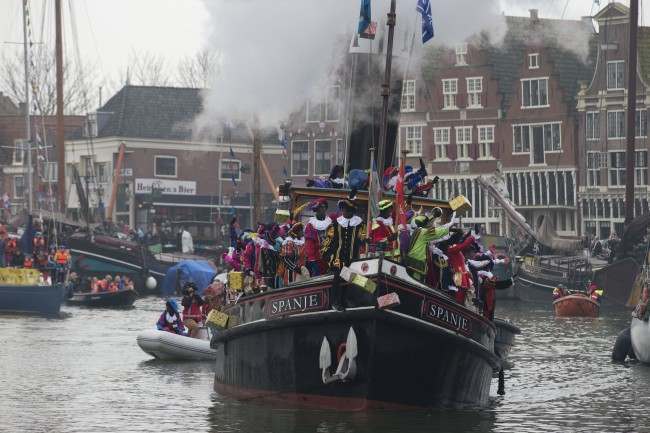
This site is unsure about Black Pete:
Depending on the commentator’s disposition towards the character, Zwarte Piet is either an Ethiopian orphan who was saved by slavery by Sinterklaas, a chimney sweep (who presumably hasn’t had time to have a bath) or a “Moorish assistant” who really enjoys doing all the work for his white friend.
“And like a shaman who appears as a little devil, Piet has attired himself in the clothes of the hated Spanish soldiers (who occupied the south of the Netherlands in the 16th century). An optimal contrast to the good Saint Nicholas.”
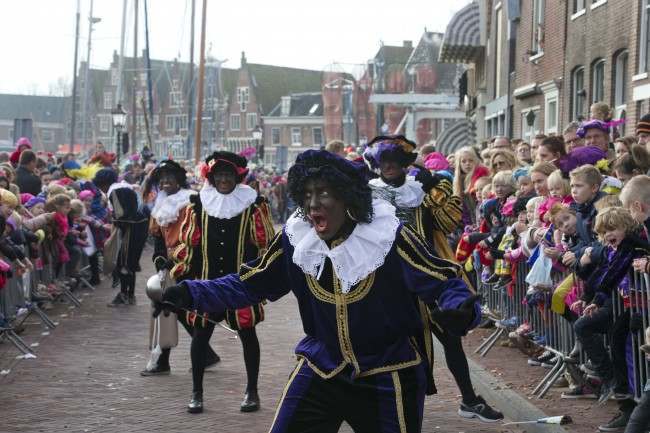
* Is Black Pete and Italian chimney sweep?
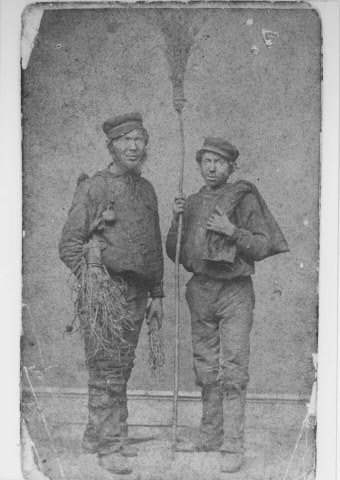
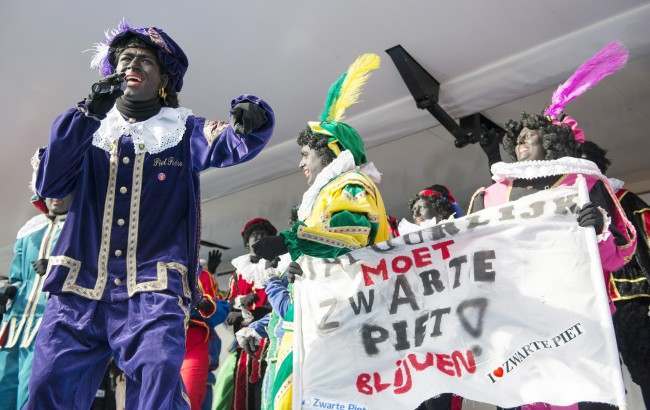
What does this black Dutchman think?
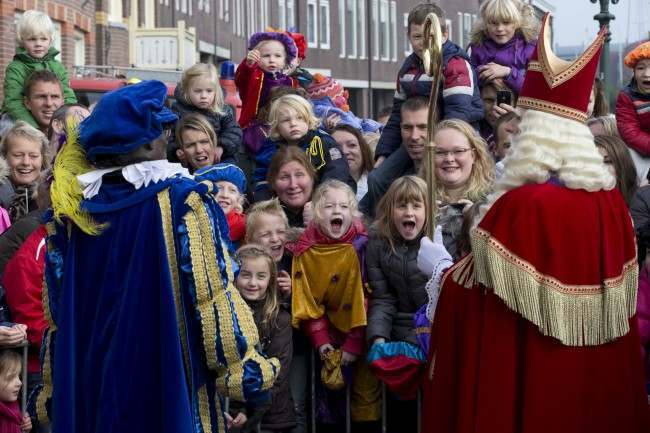
While the Dutch have mostly ignored past protests against their beloved Black Pete, the United Nations’ charge the minstrelsy character is a “living trace of past slavery” met a massive backlash.
Black Pete abolitionists were threatened, their “Green Pete” counter-festivals cancelled because of fear of protests. Even Dutch Prime Minister Mark Rutte intoned, “Zwarte Piet: the name says it already. He is black … I cannot do much about it… supporters say they are something else entirely — they see tradition, cultural touchstones, sacred rituals, acknowledgment of history and symbols of unity. As traditions increasingly become battlegrounds involving race, identity politics and political correctness, is heritage a legitimate defence against the charge of racism?
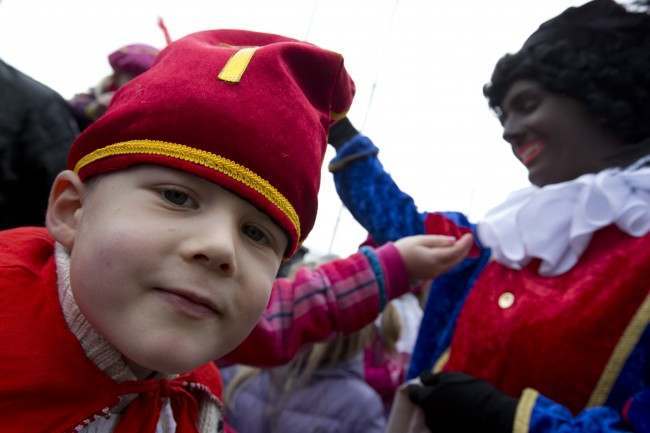
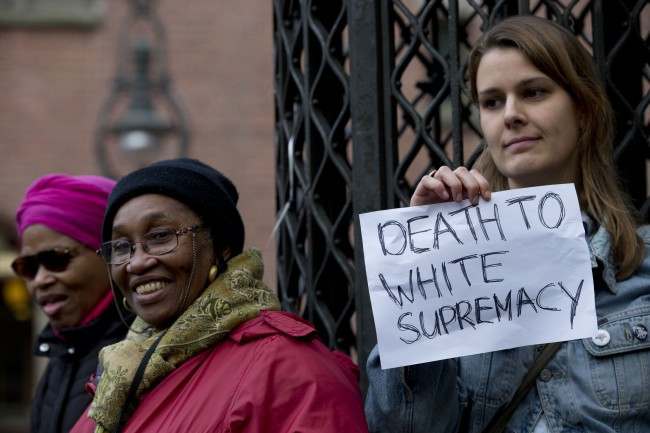
The United Nations got involved. An anonymous group told the UN of its concerns that Black Pete was a “living trace of past slavery and oppression” and that it “fostered an underlying sense of inferiority of African people in Dutch society”.
UN rapporteurs of the working group on people of African descent and minority rights sent this letter to the Dutch government. It is long, dictatorial and worthy of satire:
Excellency,
We have the honour to address you in our capacities as Chair-Rapporteur of theWorking Group on people of African descent; Special Rapporteur in the field of culturalrights; Independent Expert on minority issues; Special Rapporteur on contemporary forms of racism, racial discrimination, xenophobia and related intolerance pursuant toHuman Rights Council resolution 18/28, 19/6, 16/6, and 16/33. In this connection, we would like to bring to your Excellency’s Government’s attention information we have received concerning the Dutch celebration of Black Pete, also known as “Swarte Piet”, which, each year, is part of the Saint Nicholas Event (5 December), and precedes and accompanies the celebration of Santa Claus.
According to information received:The character and image of Black Pete perpetuate a stereotyped image of African people and people of African descent as second-class citizens, fostering an underlying sense of inferiority within Dutch society and stirring racial differences as well as racism. During the celebration, numerous people playing the Black Petefigure blacken their faces, wear bright red lipstick as well as afro wigs. The Black Pete figure is to act as a fool and as a servant of Santa Claus. The Black Pete segment of Santa Claus celebrations is experienced by African people and peopleof African descent as a living trace of past slavery and oppression, tracing back to the country’s past involvement in the trade of African slaves in the previous centuries.
Reportedly, a growing opposition to the racial profiling of Black Pete within the Dutch society, including by people of non-African origins, is to be noticed. However, it is also alleged that no response has been given to associations defending the rights of African people and people of African descent in the Netherlands, which are asking for dialogue on this issue.
Furthermore, it is reported that in relation to the acceptance of the UNESCO Convention for the Safeguarding of Intangible Cultural Heritage in 2012 by the Netherlands, proposals have been made to declare the Dutch Cultural Historical Tradition “Santa Claus and Black Pete” as Immaterial Cultural Heritage. It is reported that the Dutch authorities have selected the annual Saint Nicolas Event( December 5) as one of the intangible heritages to be submitted for inclusion in the UNESCO list.While we do not wish to prejudge the accuracy of the facts received, we should like to appeal to Your Excellency’s Government to guarantee the right to equality and non-discrimination of African people and people of African descent in accordance with article 1 of the Universal Declaration of Human Rights, article 2 of the InternationalCovenant on Civil and Political Rights and article 2 and 26 of the International Covenant on Economic, Social and Cultural Rights (ICESCR) to which the Netherlands is a party.
We would also like to recall that, according to article 15 of ICESCR, everyone has the right to take part in cultural life. In her report focused on the right of access to and enjoyment of cultural heritage, the Special Rapporteur in the field of cultural rights recommended that concerned communities and relevant individuals should be consulted and invited to actively participate in the whole process of identification, selection,classification, interpretation, preservation/safeguard, stewardship and development of cultural heritage. In particular, no inscription on UNESCO lists relating to cultural heritage or national lists or registers should be requested or granted without the free, prior and informed consent of the concerned communities.
The Special rapporteur further stressed that some practices, which are part of cultural heritage, may infringe upon human rights. International instruments clearly state that practices contrary to human rights cannot be justified with a plea for the preservation/safeguard of cultural heritage, cultural diversity or cultural rights (A/HRC/17/38, paras. 74 and 80 c).Furthermore w e wish to draw the attention of your Excellency’s Government to international standards relevant to the protection and promotion of the rights of minorities. Negative media and other cultural, social or traditional portrayals of persons belonging to minorities may constitute racism and may be degrading to members of those communities, in the present case persons belonging to Black populations and people of African descent, and can perpetuate negative stereotypes within society.
The 1992 Declaration on the Rights of Persons Belonging to National or Ethnic, Religious andLinguistic Minorities provides in article 1.1 that “ States shall protect the existence and the national or ethnic, cultural, religious and linguistic identity of minorities within their respective territories and shall encourage conditions for the promotion of that identity. ” Article 1.2 requires that “ States shall adopt appropriate legislative and other measures to achieve those ends. ” Article 5.1 states that “ National policies and programmes shall be planned and implemented with due regard for the legitimate interests of persons belonging to minorities.” A fundamental principle of human and minority rights is consultation with minority communities on issues that affect them and this must be respected in practice and in view of complaints received by members of minority communities.
Moreover, it is our responsibility under the mandates provided to us by the HumanRights Council, to seek to clarify all cases brought to our attention. Since we are expected to report on these cases to the Human Rights Council, we would be grateful for your cooperation and your observations on the following matters:
1. Are the facts alleged in the above summary accurate?
2. Have complaints been lodged with regard to the alleged situations of racism and racial stereotyping mentioned above?
3. Please indicate to which extent your Government has involved the Dutch society, including African people and people of African descent, in the discussions regarding the choice of “Santa Claus and Black Pete” as expression of cultural significance in the country.
4. Please provide the details, and where available the results, of consultations undertaken prior to the proposal of listing “Santa Claus and Black Pete” as World Intangible Heritage item. If no consultations have taken place, or if they have been inconclusive, please explain why.
5. Please provide information about steps adopted by your Government to address the wider concern expressed by African people and people of African descent regarding the Black Pete figure as a stereotyped image stirring racial differences as well as racism.
We would appreciate a response within sixty days. Your Excellency’s Government’s response will be made available in a report to the Human Rights Council for its consideration. While waiting for your response, we urge your Excellency’s Government to take all necessary measures to guarantee that the rights and freedoms of African people and people of African descent are respected. We also request that your Excellency’s Government adopt effective measures to prevent the recurrence of these acts.Please accept, Excellency, the assurances of our highest consideration.
Verene Shepherd: Chair-Rapporteur of the Working Group on people of African descent
Farida Shaheed: Special Rapporteur in the field of cultural rights
IZSÁK Rita: Independent Expert on minority issues
Mutuma Ruteere: Special Rapporteur on contemporary forms of racism, racial discrimination, xenophobia and related intolerance.
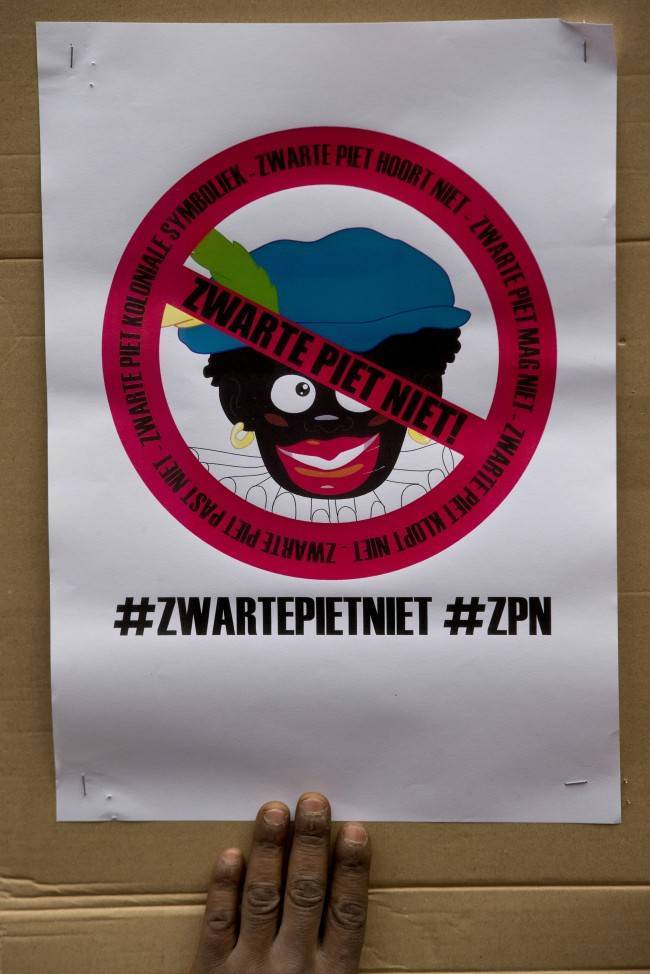
* When questioned, almost every Dutch person will sincerely deny racist intent.
Rita Izsak is the UN’s independent expert on minority issues and one of the co-authors of the letter submitted to the government. She smiles and offers a philosophical response: “Just because something is invisible to you, it doesn’t mean it’s not there.”
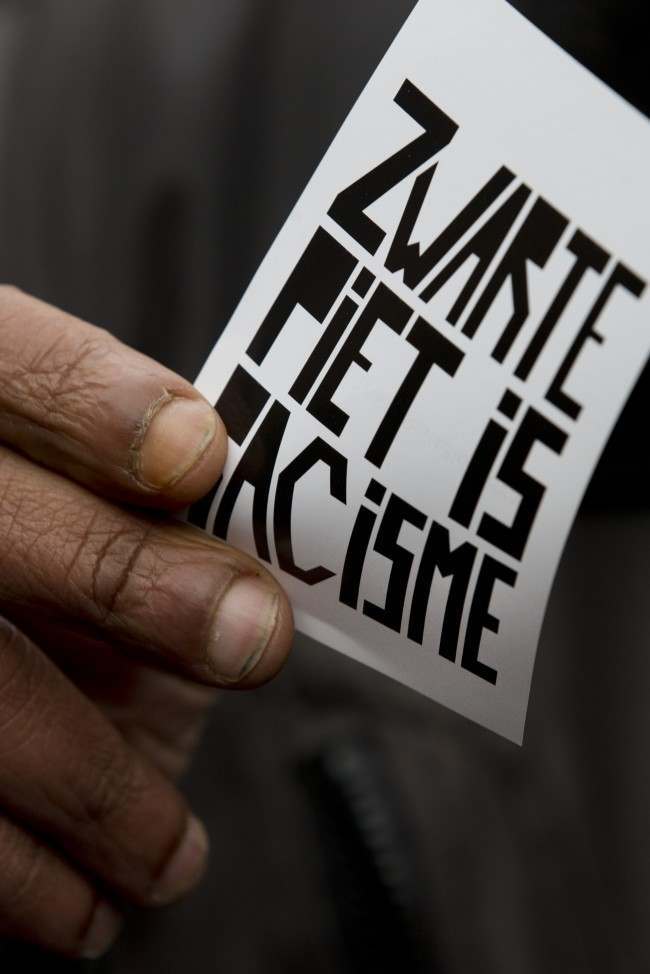
* Shepherd’s intervention prompted an indignant reaction on Facebook from Black Pete’s defenders. A Facebook “Pietitie” (Pete-ition) defending the custom earned more than two million likes, a startling number for a country of just 17 million. The populist anti-Islam politician Geert Wilders said it would be better to scrap the UN than Black Pete. Both the prime minister, Mark Rutte, and the mayor of Amsterdam, Eberhard van der Laan, offered carefully worded statements of support.
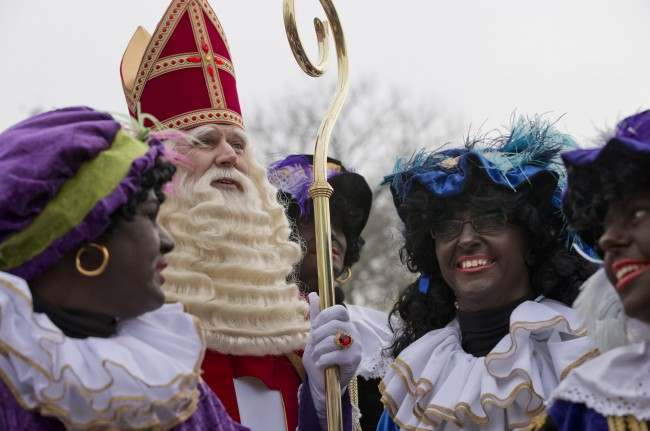
And through an American’s eyes:
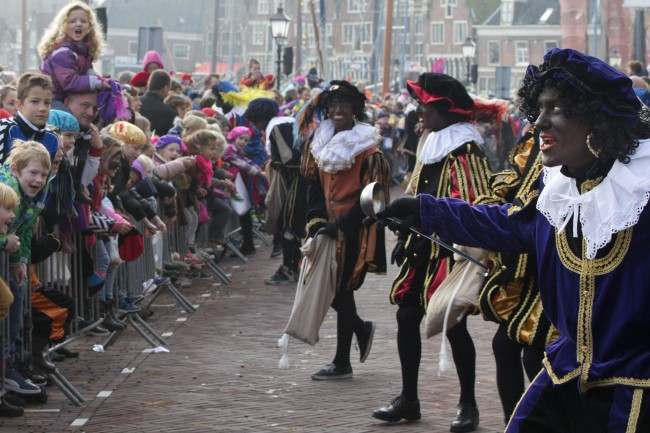
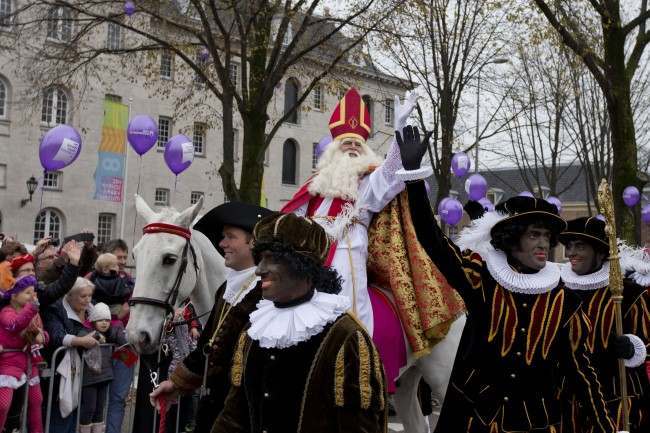
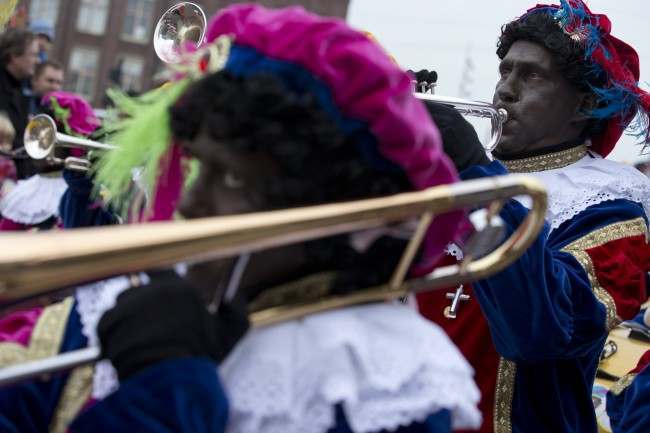
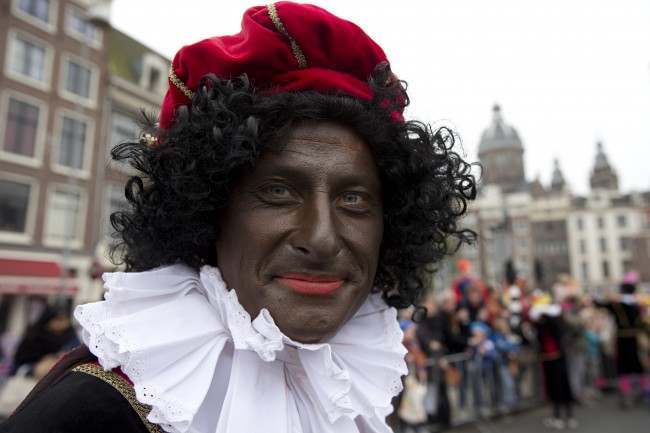
The Black Pete debate underscores how deep within the Netherlands’s prosperous and safe society lies the fear of losing identity, undoubtedly fueled by globalization, migration and the notion that the European Union is gradually doing away with the European nation state.
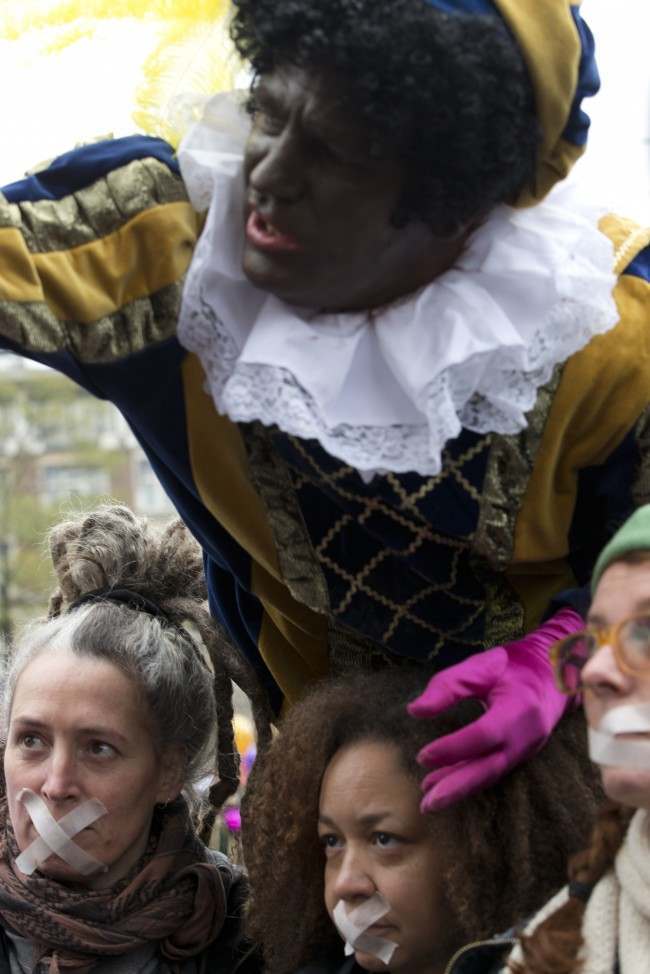
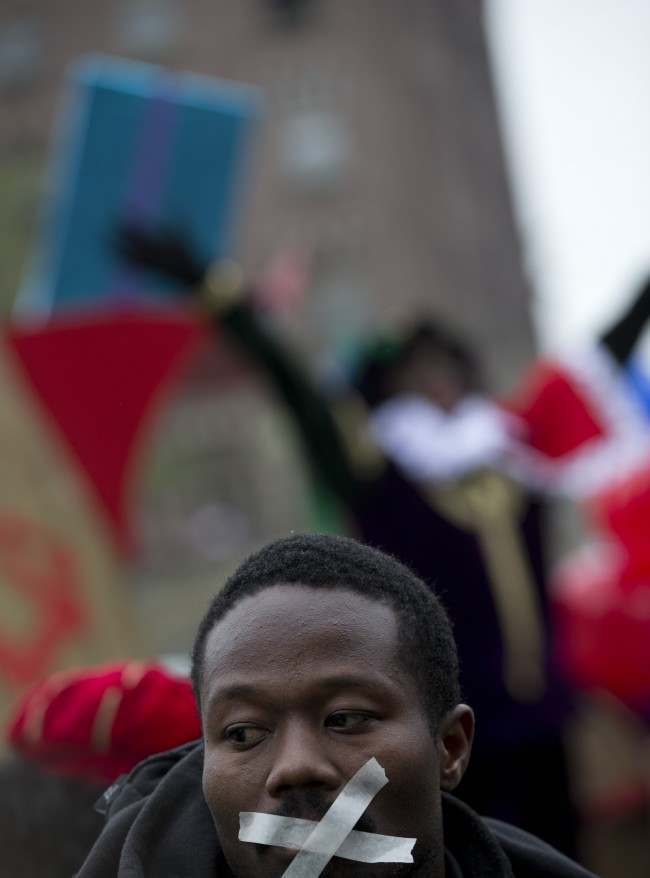
Would it make a difference if a black man played Santa?
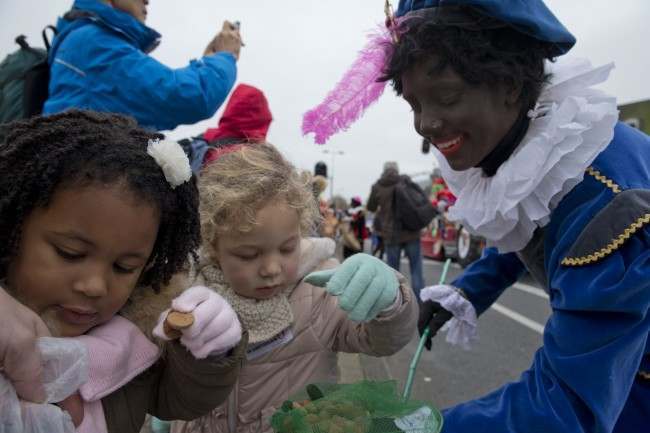
More Galleries
Posted: 17th, December 2013 | In: In Pictures, Key Posts, Reviews, Strange But True Comment | TrackBack | Permalink








